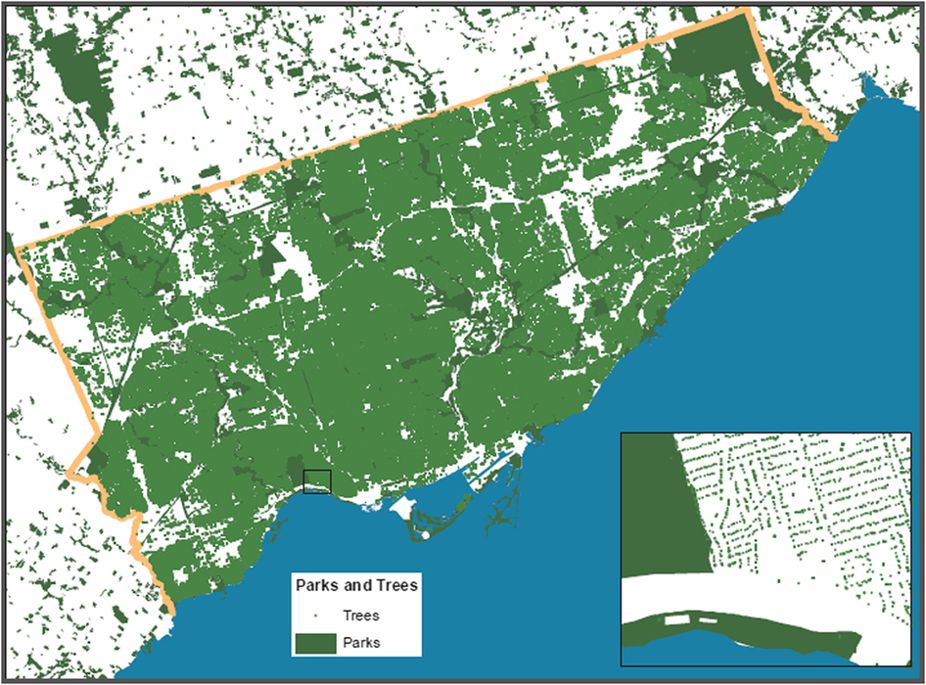Neighborhood green space and health in a large urban center, Scientific Reports
Studies have shown that natural environments can enhance health; in this article, the authors build upon that work by examining the associations between comprehensive greenspace metrics and health. They focused on a large urban population center (Toronto, Canada) and related the two domains by combining high-resolution satellite imagery and individual tree data from Toronto with questionnaire-based self-reports of general health perception, cardio-metabolic conditions and mental illnesses from the Ontario Health Study. Results from their analyses suggest that people who live in neighborhoods with a higher density of trees on their streets report significantly higher health perception and significantly less cardio-metabolic conditions (controlling for socio-economic and demographic factors).
They found that having 10 more trees in a city block, on average, improves health perception in ways comparable to an increase in annual personal income of $10,000 and moving to a neighborhood with $10,000 higher median income or being 7 years younger. They also found that having 11 more trees in a city block, on average, decreases cardio-metabolic conditions in ways comparable to an increase in annual personal income of $20,000 and moving to a neighborhood with $20,000 higher median income or being 1.4 years younger. — (Abstract)

Image source.

